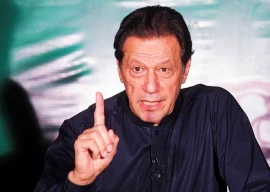
There are many lessons policymakers can learn from the experiences in other parts of the world. When I looked after Latin America and the Caribbean region for the World Bank, I saw many economies pick themselves up from almost free fall, steady their situation and then begin to grow and improve the well-being of the citizenry. Both, Argentina and Brazil were able to accomplish that feat. One thing that impressed me about the Latin American economies in extreme distress was that once the right set of policies were adopted, the bounce-back in the rate of economic expansion happened quickly. The recovery was fairly sharp and enduring. This is what is meant by plucking the low hanging fruit.
What are the few things that need to be done immediately — say in the first one hundred days — after the change in regime occurs? I would suggest four areas of economic reform. One consequence these suggested policies will have is to increase investor confidence in the future of the economy. That alone will bring new investments into the economy by the private sector.
The first is to indicate that there will be no tolerance for corruption in high places. Corruption takes many forms and affects people differently. It will take a while and serious institutional innovation to bring it under control at the lower-level. Significant amount of corruption is built into the administrative systems. The British designed the systems of land records and maintenance of law and order at the local (thana) level so that the people paid for the services of the patwari and the thanedar rather than have the state assume the entire budgetary burden of adequately paying these functionaries. Dealing with corruption at these levels will take time. There will need to be major systemic changes before this can be brought under control. But higher level misdemeanour can be dealt with through the setting of good examples by the policymakers who occupy senior levels and by putting in place a system of accountability that is independent of executive control. The previous attempts in Pakistan to create such a system became the victims of political exploitation. Once the signal goes out that there will be no tolerance for bad behaviour, it will have a salutary effect on the way policymakers will deal with the people.
The second area for attention by the new regime should be the improvement in the investment climate for the private sector. As economists have known for a long time, confidence in the future is an extremely important determinant of private investment and, hence, of economic growth. The private sector will also be encouraged if the regulatory system is overhauled. The new government would do well to review all the regulations in place and streamline them with a view to ridding the system of those that serve no economic or social purpose. They have remained in place since they provide handsome rents to those responsible for implementing them. Some of the laws on the books have long served their purpose but have been retained since some vested interests have turned their provisions into rent seeking activities.
The third area that should receive the attention of the new set of policymakers is the size and funding of the public sector development programme. The Planning Commission has carried out a thorough review of the programme as it stands today and found that there are thousands of projects on its books with trillions of rupees of throw-forward. This is the amount that was allocated but not actually provided and, therefore, remains undisbursed. Several projects are under implementation, providing funds for their managers, staffs, residences and offices. Cleaning up this programme will not only save the government considerable amount of resources, it will also help to rationalise public sector spending.
The fourth area requiring immediate attention is the energy sector. Pakistan’s energy problem now encompasses both electricity and natural gas. It is badly hurting the people and the people have begun to react. There was recently tire-burning on the Islamabad Highway as people expressed their anger at the shortage of gas in their cooking stoves. Gas and electricity shortages are also hurting the economy.
Solving the energy crisis will take time and also require a great deal of investment. The state does not have the resources to meet the growing needs. The private sector has to be brought in. One approach would be to allow the provinces to invite the private sector to invest in hydro power. If anecdotal evidence is any guide, various provinces in the country have hundreds of sites on canals, streams and rivers that can be tapped to produce electricity.
Licenses to invest should be given not on the basis of the price the state is prepared to pay for buying the power produced. This was done when the first wave of IPP (independent power producers) invested in developing the energy sector. Instead, licenses should be handed out on the basis of auctions, with those indicating the lowest price they want for the power they produce, getting the go-ahead. This should be the limit of the state’s involvement.
With these policies and initiatives in place, the Pakistani economy could bounce back from its current slump. They will also set the stage for undertaking deeper structural reforms without which the country cannot climb on a high growth trajectory. The four reform areas discussed above could add as much as a percentage and a half points to the rate of growth every year. This means that by the calendar year 2015, two years after a set of new rulers takes office, Pakistan’s growth rate could double, increasing from three to six per cent a year.
Published in The Express Tribune, January 9th, 2012.
COMMENTS (13)
Comments are moderated and generally will be posted if they are on-topic and not abusive.
For more information, please see our Comments FAQ











































@You Said It: That's because after 4 years of wait, it would be naive of us to expect any change from the current govt. Regime change is necessary if you were to evaluate deeper social / political / economic indicators of the country.
@Mirza: It is a matter of sequence. There is a perfect solution that you are proposing and there is a workable solution that the author is proposing. Rather than waiting for eternity for perfect solution to be implemented, won't it be wiser to get started with the workable solution and in the mean time, we will find a way to make it to your perfect solution?
@Usman Ahmad: For the last three years SBP and finance minister urged the GoP to cut government spending, subsidies to reclaim the economy. The opinion in this column is essentially what was recommended by IMF. Instead, PAK institutions blamed IMF for the deterioration of the economy. The several events such as flood and Abottabad hasten the present state of affairs.
It will take a second free and fair election, restrain in spending and bellicose from all the institutions of PAK to bring the economy back on tract, which will take about seven years.
PAK had surplus balance of payment in 1947, low population, fairly educated class as the beneficiary of British Raj, excessive resources for her need, and attracted foreign investments. Yet, after 60 years all institutions, including the acclaimed big institution, are in failed state. So yes, it will take a miracle.
If this op-ed was about economic policy recommendations - why throw in the dig at the current govt and the pitch for a regime-change at the start? It undermines the credibility of the whole article. Gave me the impression that this paper was about getting attention from the PTI.
A very shallow and simple Op Ed by every sense of the word. Only a couple of thought provoking questions need answered. Out of four army govts with totalitarian powers for almost 4 decades, why were these things not implemented. Instead heroine, extremism, and jihadists were nurtured and protected against the civilians. The example of Argentina and Brazil is valid only after they took care of their out of control military. In addition the author failed to give the defense expenses of poor Pakistan vs. Argentina and Brazil as % of GDP. Neither of these countries have the kind of army and expensive war toys including hundreds of nuclear boms. Their emphasis is on the growth, education, public well being, and prosperity. Our Gen Zia has included the concept of Jihad in the armed forces and terrorists in our army bases. Unlike Argentina and Brazil, Pakistan is a safe haven for global terrorists.
With the climate of everyday bombings, killing and kidnapping of traders and secular figures and minorities, who is going to come ans invest in Pakistan? Let us create an environment of peace and security by using over half a million army first before talking about any progress. Would you be kind enough to give a chart or graph showing the total expenses on the army enterprise vs. education, healthcare and civic projects?
Perfect solution to Pakistan's problems! Pakistan is blessed with intellectual people like Mr. Shaid Javed Burki.
@Babloo, John B He didn't mention any rocket dcience. Did he? Apart from one external factor i.e., forien investment, the rest of the policies can be implemented with will, courage and vision. But you have taken things to metaphysical lebel. Pakistan is going to disintegrate...thank you..nice starter for a debate.
I think PTI must listen to these prescriptions carefully and put these into their policy agenda. It will be a good for Pakistan if they contact with people like Shahid Javed Burkee for formulation of economic policy...
Good article. It is to be noted that single most important factor affecting economic growth is the predictability of the macro-economic environment. If major challenges such as corruption at the highest level, restoration of investor confidence (including law and order situation), energy sector shortfalls (at least a short-term solution), and contract bidding controls (biggest corruption leakage) are addressed, economy can bounce back rather quickly. It might not be easy, but we have run out of options, we have to burn the boats!
Nothing wrong in wishful thinking. Miracles do happen.
If new government brings free money from somewhere and gives it to people, they might tolerate them for sometime to experiment your thoughts. We all know, this is not going to happen. The moment new government asked a very tiny sacrifice, prices went one dime up, one terrorist attack or energy shortage, that would be the end of revolution. I would suggest first step and that would be, "The new government should announce that they would reduce government expenses including defence expenditures upto twenty percent and collect ten percent more taxes than previous fiscal year and those thirty percent savings would be spent only on development. Also from next fiscal year, government would collect only that extra amount in taxes which would be equal to reduction in government expenses."
Burki Sahib; you are an eminent World Bank economist and out of all the people you forgot the most important factor which is taking Pakistan towards decline and disintegeration i.e. reduce the expenses of the army, navy and air force. It is morethan 50% of Pakistan's budget. With that kind of expenses and no end in sight there is nothing but decline and ultimately disintegration.
Since US took away one billion out of subsidy to Pakistani army, they asked the civillian government to foot the difference and they did. They cut developmental expenses to keep army happy.
Another five years there will not be pakistan left to talk about. It will be mess with Bulochistan wanting out Pakhtuns making similar noises.
If Burki Sahib, you have to argue then argue to cut defence budget.
Hari Sud Toronto
Pakistan is suffering from radicalism, extremism, violence and an absence of law. The author has written an entire article where nothing can be implemented because Foreign Investors are missing. When even the most powerful can only venture out with heavily armed escorts, how will having a new government in place help ? Will the violence disappear with a change of guard ? If the violence stops I would be very surprised because it would only mean that those wanting to induce change were responsible for the violence.
@Mr Shahid Javed Burki, what country and political system are you talking about ? How can you pluck low hanging fruit when either no such fruit exists or plucking of low hanging fruit is against 'ghairiat' ?